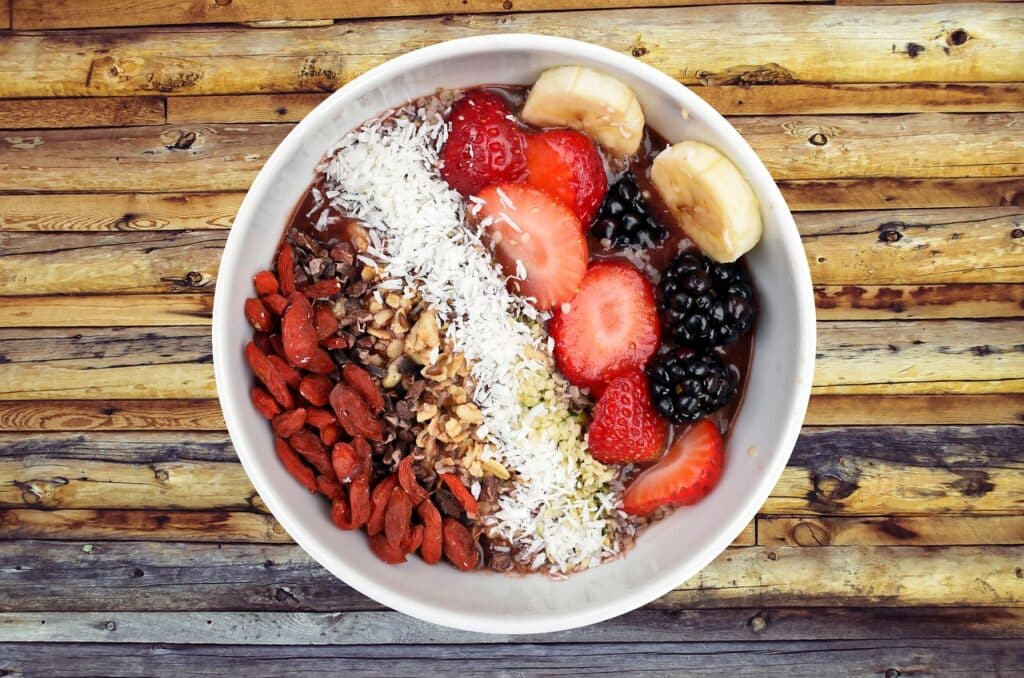In the pursuit of health and wellness, maintaining an optimal body fat percentage stands out as one of the most emphasized goals. Body fat plays a vital role in our body, cushioning organs, regulating hormones, and acting as a reserve energy source. However, having too much or too little can lead to various health issues, from cardiovascular diseases to metabolic imbalances. It’s a fine balance, and striking the right one can lead to enhanced physical performance, a boost in energy levels, and reduced risks of chronic diseases.
Yet, losing body fat remains a monumental challenge for many. Fad diets promise rapid results but often lead to quick rebounds. Gym memberships sometimes gather dust, and daily responsibilities make consistent healthy eating a daunting task. With a plethora of conflicting information and the ever-present temptations of modern life, it’s no wonder that many find the journey toward a healthier body fat percentage riddled with obstacles. In this article, we will unravel seven tricks that can help make this journey less arduous and more attainable, allowing for a more effortless approach to shedding those stubborn fat layers.
1. Stay Hydrated

Water is often hailed as the elixir of life, and when it comes to metabolism and fat burning, this isn’t an exaggeration. Every cell in our body requires water to function optimally. It aids in the transportation of nutrients, supports digestion, and helps regulate body temperature. Most importantly, water is a critical component in the metabolic process. When we’re dehydrated, our metabolism can slow down, hindering the body’s ability to burn calories and, by extension, fat.
Moreover, drinking water can aid in weight loss in more direct ways too. Consuming water before meals has been shown to reduce the amount one eats, acting as a natural appetite suppressant. Plus, replacing calorie-laden drinks like sodas or sugary juices with water can make a substantial difference in daily caloric intake, further supporting fat loss.
So, how can we ensure we’re drinking enough water throughout the day? Here are some tips to elevate your hydration game:
- Start Your Day with a Glass: Before reaching for that morning coffee, drink a glass of water. It not only kickstarts your metabolism but also helps in flushing out toxins accumulated overnight.
- Use a Marked Water Bottle: Invest in a water bottle that has hourly markers. This visual cue can remind you to drink at regular intervals.
- Flavor It Naturally: If you find plain water bland, try adding slices of fruits like lemon, cucumber, or berries. It infuses a natural flavor without added sugars.
- Set Reminders: In our busy lives, it’s easy to forget to hydrate. Set alarms or reminders on your phone every hour as a nudge to take a sip.
- Eat Water-rich Foods: Consuming foods with high water content like watermelon, cucumber, and oranges can also contribute to your daily water intake.
Remember, while the general recommendation is to drink 8 glasses or about 2 liters of water a day, individual needs can vary. Listen to your body, and adjust your intake according to your activity level, climate, and personal requirements.
2. Integrate High-Intensity Interval Training (HIIT)

High-Intensity Interval Training, commonly known as HIIT, has garnered much attention in recent years, and for good reason. HIIT is a form of exercise that alternates between short bursts of high-intensity activity followed by low-intensity recovery periods or rest. This sequence is repeated multiple times, making for a workout that is both time-efficient and effective.
Why is HIIT Effective for Fat Burning?
- Afterburn Effect: One of the major perks of HIIT is the post-exercise oxygen consumption (EPOC) or the “afterburn” effect. After a HIIT session, your body continues to burn calories at an elevated rate even when at rest, as it works to restore itself to its pre-exercise state. This phenomenon can extend for hours post-workout.
- Time Efficiency: Because of its intensity, HIIT sessions can be much shorter than traditional workouts. This means you can get significant results in as little as 20-30 minutes, making it ideal for those with tight schedules.
- Versatility: HIIT can be tailored to suit any fitness level and can be done with or without equipment, making it accessible to everyone.
Sample Beginner HIIT Routine
Always start with a 5-minute warm-up, like brisk walking or light jogging, to prepare your body.
- Squats: 30 seconds (high intensity) followed by 30 seconds rest.
- Push-Ups: (on knees or full) 30 seconds (high intensity) followed by 30 seconds rest.
- Jumping Jacks: 30 seconds (high intensity) followed by 30 seconds rest.
- Plank: Hold for 20 seconds (intense effort) followed by 40 seconds rest.
- High Knees: 30 seconds (high intensity) followed by 30 seconds rest.
Repeat this circuit 2-3 times, with a 1-2 minute rest in between rounds. Finish with a 5-minute cool-down, like stretching, to aid recovery.
While HIIT offers numerous benefits, it’s crucial to listen to your body. Ensure you maintain proper form to prevent injuries and consider consulting a fitness professional before starting any new exercise regimen. As you become more accustomed to the intensity, you can increase the duration and reduce rest intervals to continue challenging yourself.
3. Consume More Fiber

Fiber, often deemed the unsung hero of the nutrition world, plays a pivotal role in our digestive health and weight management. While it might not be the flashiest nutrient, its impact on our body is profound.
The Benefits of Fiber
- Aids in Digestion: Fiber adds bulk to the stool, facilitating smoother bowel movements. This can prevent constipation and other digestive disorders.
- Provides a Feeling of Fullness: Fiber-rich foods tend to be more filling, making you feel satiated for longer periods. This means you’re less likely to overeat or reach for unhealthy snacks between meals.
- Stabilizes Blood Sugar: By slowing the absorption of sugar, fiber helps in regulating blood sugar levels, reducing the risk of insulin spikes and crashes.
- Supports Fat Loss: A consistent intake of fiber can lead to reduced calorie intake, promoting fat loss. Additionally, certain types of fiber can act as prebiotics, nourishing beneficial gut bacteria, which play a role in weight management.
High-Fiber Foods to Incorporate into Your Meals
- Whole Grains: Opt for whole grains like quinoa, barley, oats, and whole wheat over their refined counterparts.
- Legumes: Lentils, beans (black beans, kidney beans), and chickpeas are not only rich in fiber but also pack a punch of protein.
- Vegetables: Broccoli, Brussels sprouts, carrots, and spinach are just a few veggies that boast a high fiber content.
- Fruits: Berries (raspberries, blackberries), apples (with skin), pears (with skin), and bananas are fiber-rich choices.
- Nuts and Seeds: Almonds, chia seeds, and flaxseeds are both nutrient-dense and high in fiber.
- Tubers: Potatoes, sweet potatoes, and other root vegetables are good sources of fiber, especially when consumed with their skin.
Incorporating these foods into your daily meals can significantly elevate your fiber intake. However, as you increase fiber in your diet, it’s also essential to increase your water intake to support digestion. Remember, like any dietary change, it’s best to increase fiber gradually to give your gut time to adjust.
4. Prioritize Sleep

Sleep, while often overlooked in the realm of health and weight management, holds a key position in the symphony of factors that dictate our well-being. Adequate sleep is not just about feeling rested; it’s deeply intertwined with hormonal balance, metabolism, and, consequently, weight management.
The Relationship Between Sleep, Hormones, and Weight Gain
- Ghrelin and Leptin: Sleep deprivation can disrupt the balance of our hunger hormones. Ghrelin, which signals hunger, increases, while leptin, which signals fullness, decreases. This imbalance often leads to increased appetite and overeating.
- Insulin Sensitivity: Lack of sleep can decrease insulin sensitivity, causing the body to produce more insulin after eating. Higher insulin levels promote fat storage and increase the risk of type 2 diabetes.
- Cortisol Spike: Chronic sleep deprivation can elevate cortisol levels, the stress hormone. Elevated cortisol can lead to increased appetite, especially for sugary and fatty foods.
- Reduced Metabolic Rate: Prolonged sleep deprivation can slow down metabolism, meaning fewer calories are burned at rest.
Tips for Improving Sleep Quality
- Consistent Sleep Schedule: Try to go to bed and wake up at the same time every day, even on weekends. This helps regulate the body’s internal clock.
- Create a Relaxing Bedtime Routine: Engage in calming activities like reading, listening to soothing music, or practicing meditation to signal the body that it’s time to wind down.
- Optimize Your Sleep Environment: Make your bedroom conducive to sleep. This includes a comfortable mattress, dark curtains, and a cool room temperature.
- Limit Screen Time: The blue light emitted from phones, tablets, and computers can interfere with melatonin production, a hormone responsible for sleep. Try to avoid screens at least an hour before bedtime.
- Avoid Caffeine and Large Meals Late in the Day: Both can disrupt sleep. Aim to finish eating 2-3 hours before bed and limit caffeine intake in the afternoon and evening.
- Exercise Regularly: Regular physical activity can help you fall asleep faster and enjoy deeper sleep. However, avoid exercising too close to bedtime as it might have the opposite effect.
- Limit Naps: If you must nap during the day, keep it short (20-30 minutes) and avoid napping late in the afternoon.
In the hustle and bustle of modern life, sleep can sometimes take a backseat. But prioritizing sleep is a non-negotiable aspect of holistic health, impacting not just weight but mental well-being, immunity, and overall vitality.
5. Mindful Eating

Mindful eating, rooted in the broader concept of mindfulness, revolves around being fully present during the act of eating. It encourages a deepened awareness of our responses to food, helping us distinguish between true hunger and the often deceptive pull of emotional eating.
Understanding Hunger vs. Emotional Eating
- Physical Hunger: This is the body’s natural signal that it’s time to refuel. It comes on gradually and can be satisfied once you’ve eaten enough. Physical hunger might be accompanied by a growling stomach, slight headache, or a drop in energy.
- Emotional Eating: This is driven by emotions rather than actual hunger. Stress, boredom, sadness, or even joy can trigger a desire to eat even if you’re not physically hungry. Emotional eating often leads to reaching for comfort foods, which are typically high in sugar, fat, and calories.
Tips for Paying Attention to Hunger Cues and Savoring Each Bite
- Check-in Before Eating: Before grabbing a snack or meal, pause and ask yourself why you’re eating. Are you truly hungry, or are you trying to quell an emotion?
- Start with Smaller Portions: It’s easier to pay attention to your hunger and fullness cues when you’re not overwhelmed by a huge plate of food. Remember, you can always get more if you’re still hungry.
- Eat Slowly: It takes about 20 minutes for the brain to register fullness. Eating slowly allows you to recognize when you’ve had enough, reducing the risk of overeating.
- Limit Distractions: Try to eat without the TV on, away from your computer, and put the phone down. When you’re fully present, you can better appreciate the flavors, textures, and smells of your food.
- Appreciate Your Food: Before diving into your meal, take a moment to express gratitude for the nourishment in front of you. This simple act can set the tone for a more mindful eating experience.
- Use Your Senses: Engage all your senses while eating. Notice the color of your food, the aroma, the texture, and, of course, the taste. This not only enhances the eating experience but also fosters a deeper connection to your food.
- Check-in Mid-Meal: Halfway through your meal, pause and gauge your hunger. Are you still hungry, or are you starting to feel full? Adjust your eating speed or decide if you need to continue eating based on this check-in.
Mindful eating is a practice, and like all practices, it takes time to cultivate. The benefits, however, are profound, not only in managing weight but also in developing a healthier, more harmonious relationship with food. By tuning into our body’s signals and approaching eating with intention and attention, we can derive greater satisfaction from our meals and make choices that truly nourish us.
6. Limit Added Sugars

Added sugars, unlike the natural sugars found in fruits and dairy, are incorporated into foods and beverages during their production. These sweet additives might make products taste delightful, but they come with a host of health concerns, especially when consumed in excess.
The Impact of Sugar on Insulin Levels and Fat Storage
- Blood Sugar Spike: When you consume sugary foods and drinks, your body experiences a rapid increase in blood sugar. This sudden spike requires the pancreas to release insulin, a hormone responsible for guiding sugar from the bloodstream into cells to be used as energy.
- Insulin Overdrive and Fat Storage: Consistently high sugar consumption leads to frequent insulin spikes. Over time, cells can become resistant to insulin, requiring the body to produce even more of the hormone to keep blood sugar levels in check. Excess sugar that isn’t needed for immediate energy gets stored as fat. Additionally, high insulin levels can inhibit the breakdown of stored fat, making weight loss more challenging.
- Increased Hunger: High sugar intake can disrupt the balance of hunger-regulating hormones, leading to increased appetite and calorie consumption.
Strategies to Cut Down on Sugary Foods and Beverages
- Read Labels: Added sugars lurk in many processed foods, even those that don’t taste overly sweet. Familiarize yourself with sugar’s many names (like sucrose, high fructose corn syrup, maltose, dextrose, etc.) and check ingredient lists.
- Opt for Natural Sweeteners: Replace refined sugars with natural sweeteners like honey, maple syrup, or stevia. While they still contain calories (except for stevia), they are often sweeter than sugar, so you might use less.
- Limit Sugary Drinks: Sodas, sweetened teas, and many fruit juices are packed with added sugars. Switch to water, unsweetened teas, or sparkling water with a splash of natural fruit juice for flavor.
- Choose Whole Fruits: Instead of fruit-flavored yogurts or snacks, go for whole fruits. They offer natural sweetness along with beneficial fiber and nutrients.
- Cook at Home: Preparing your own meals allows you to control the ingredients and limit the addition of unnecessary sugars.
- Limit Desserts and Sweets: Reserve cakes, candies, and other sugary treats for occasional indulgences rather than daily eats.
- Increase Fiber Intake: Foods high in fiber, like whole grains, legumes, and vegetables, can help stabilize blood sugar levels, reducing the desire for sugary snacks.
- Stay Hydrated: Sometimes, our bodies can confuse thirst with hunger. Drinking water throughout the day can help curb unnecessary sugar cravings.
Incorporating these strategies into your daily routine can significantly reduce your intake of added sugars. Over time, as your palate adjusts, you might even find that you naturally prefer less-sweet flavors, making the transition away from sugary foods and drinks even smoother.
7. Incorporate Strength Training

While many people turn to cardio when trying to shed pounds, incorporating strength training can be a game-changer in one’s fitness journey. It not only helps in sculpting the body but also plays a crucial role in boosting metabolism.
Benefits of Muscle Mass in Increasing Resting Metabolic Rate
- Muscle Burns More Calories: Even at rest, muscle tissue requires more energy to maintain than fat does. This means the more muscle you have, the more calories you’ll burn throughout the day, even when you’re not exercising.
- Improved Insulin Sensitivity: Strength training can enhance the way our bodies use insulin and process glucose, reducing the risk of metabolic disorders.
- Enhanced Bone Density: Lifting weights not only strengthens muscles but also increases bone density, offering protection against osteoporosis and related conditions.
- Body Composition: While it’s possible to lose weight through diet and cardio alone, incorporating strength training ensures that much of the weight loss comes from fat rather than muscle. This results in a more toned appearance.
Basic Strength Training Exercises for Beginners
- Squats: Targeting the quads, hamstrings, glutes, and core, squats are foundational. Stand with feet shoulder-width apart, push your hips back, and bend your knees, lowering yourself as if sitting in a chair.
- Push-Ups: Great for the chest, shoulders, triceps, and core. Start in a plank position and bend your elbows, lowering your body until your chest is just above the ground. If standard push-ups are challenging, begin with knee push-ups.
- Plank: A core stabilizer. Lie face down and lift your body onto your elbows and toes, keeping your body straight like a board.
- Lunges: Effective for the quads, hamstrings, and glutes. Stand tall, take a step forward and lower your body until both knees form a 90-degree angle.
- Bent-over Rows: This move targets the back and biceps. Holding a dumbbell in each hand, bend slightly at the knees and lean forward from the waist. Pull the dumbbells towards your hip.
- Dumbbell Bicep Curls: Perfect for the biceps. Holding a dumbbell in each hand with palms facing forward, bend your elbows, bringing the dumbbells towards your shoulders.
- Tricep Dips: Targeting the triceps, use a bench or chair. Place your hands on the bench with fingers pointing forward and feet out in front. Bend your elbows to lower your body and then push up to the starting position.
Remember, as with any exercise regimen, proper form is crucial to prevent injuries and reap the maximum benefits. If you’re new to strength training, consider consulting with a personal trainer or seeking out reliable video tutorials to ensure you’re performing exercises correctly. Additionally, allow muscles to recover with at least one rest day between strength training sessions targeting the same muscle group.
Conclusion
Embarking on a fat loss journey isn’t solely about shedding pounds or achieving a specific look. Instead, it’s a comprehensive endeavor that merges multiple facets of well-being. Let’s take a moment to recap the seven tricks we’ve explored:
- Stay Hydrated: Water plays an essential role in boosting metabolism and aiding fat burning.
- Integrate High-Intensity Interval Training (HIIT): HIIT offers efficient fat-burning workouts, even for those pressed for time.
- Consume More Fiber: Fiber aids digestion, promotes feelings of fullness, and helps prevent overeating.
- Prioritize Sleep: Quality sleep ensures hormonal balance, which is pivotal for weight management.
- Mindful Eating: Being present during meals helps distinguish true hunger from emotional eating.
- Limit Added Sugars: Reducing sugar intake can stabilize insulin levels and prevent unnecessary fat storage.
- Incorporate Strength Training: Building muscle increases resting metabolic rate, ensuring you burn more calories even at rest.
But, as we close this discussion, it’s imperative to emphasize perspective. While these tricks can offer guidance, the true essence of the journey lies in embracing a holistic approach. The scale might offer data, but it doesn’t define success. Success is found in the healthier choices made daily, the increased energy felt, the joy of movement, and the understanding that this journey is as much about mental and emotional well-being as it is about physical health.
So, as you forge ahead, remember to be patient and kind to yourself. Celebrate the small victories and know that every step, no matter how minor, is progress towards a healthier, more vibrant you.







